Tamron 70-210mm F/4 Di VC USD Handleiding
Bekijk gratis de handleiding van Tamron 70-210mm F/4 Di VC USD (4 pagina’s), behorend tot de categorie Lens. Deze gids werd als nuttig beoordeeld door 73 mensen en kreeg gemiddeld 4.9 sterren uit 37 reviews. Heb je een vraag over Tamron 70-210mm F/4 Di VC USD of wil je andere gebruikers van dit product iets vragen? Stel een vraag
Pagina 1/4

TLM-A034-T/T-1709-01
70-210mm F/4 Di VC USD
(for Nikon, Canon)
Model:
A 034
Owner’s manual
* The Marking is a directive conformity mark of the European Community (EC).
* Das -Zeichen entspricht der EC Norm.
* La marquage est un marquage de conformité à la direcive CEE (CE).
* La marca es marca de conformidad segun directiva de la Comunidad Europea (CE).
* Il marchio attesta la conformita alla directtiva della Comunità Europea (CEE).
* 标志表示符合欧州共同体(EC)指标
The EEC Conformity Report applies to the Council
Directive 2014/30/EU, 2011/65/EU and is used by
Tamron Co., Ltd., manufacturer of this product.
17
18
17
18
17
12
25
35
3
5
19
20
17
21
Canon
Nikon
13 14
16 15
13 14
1615
Focusing
Zooming
3
2
1
7
8
9
5
10
6
11
12
4
19
18
17
20 21

ENGLISH
Thank you for purchasing the Tamron lens as the latest addition to your photographic equipment.
Before using your new lens, please read the contents of this Owner’s Manual thoroughly to
familiarize yourself with your lens and the proper techniques for creating the highest quality
images possible. With proper handling and care, your Tamron lens will give you many years of
photographing beautiful and exciting pictures.
Explains precautions that help to prevent problems.
Explains things you should know in addition to basic operations.
PART NAMES (Refer to Fig. )
①
Lens hood
②
Hood attaching alignment mark
③
Hood locking mark
④
Filter ring
⑤
Hood release mark
⑥
Zooming ring
⑦
Focal length scale
⑧
Focal length mark
⑨
Focus ring
⑩
Distance scale
⑪
Distance mark
⑫
Tripod mount mark
⑬
VC (Vibration Compensation) switch
⑭
AF/MF switch
⑮
Lens attachment mark
⑯
Lens-camera interface contacts
Tripod mount (Model A034TM / sold separately)
⑰
Tripod mount
⑱
Tripod mount locking screw
⑲
Screw hole for safety lock screw
⑳
Safety lock screw (×2)
㉑
Hexagonal wrench
MAIN SPECIFICATIONS
Model A034
Focal Length 70-210 mm
Maximum Aperture F/4
Angle of View 34
˚
21
'
- 11
˚
46
'
Lens Construction 14/20
Minimum Focus Distance 0.95 m (37.4
"
)
Maximum Magnication Ratio 1:3.1
Filter Size
ø
67 mm
Length 174 mm (6.9
"
)
*
Diameter
ø
76 mm
Weight 850 g (30.0 oz)
*
Lens Hood HA034
*
Values are specications of Nikon products.
Length: From lens front to mount surface.
Features and appearances of lenses listed in this owner's manual are subject to change without
notice.
ATTACHING AND REMOVING THE LENS
Remove the rear cap of the lens. Align the lens attachment mark
⑮
and mounting mark on the
camera, and then insert the lens.
Turn the lens counterclockwise for Nikon models or clockwise for Canon models until it locks.
To remove the lens, turn the lens in the opposite direction while pressing the lens release button
on the camera.
Turn off the power of the camera before attaching or removing the lens.
In the case of Canon cameras, align with the EF lens mark (red circle).
For details, please read the instruction manual of your camera.
SWITCHING FOCUS MODE (Ref. Figs. - )
To shoot using autofocus (AF), set the AF/MF switch
⑭
to “AF”. (Ref. Fig.
)
To shoot using manual focus (MF), set the AF/MF switch
⑭
to “MF”, and then use your hand to
turn the focus ring
⑨
and focus the image. (Ref. Figs.
,
)
The distance scale
⑩
is provided as a guideline. It may differ from the actual focus distance.
In AF mode, it may be difcult for autofocus to work depending on the subject.
Through the full-time manual mechanism, when focusing with AF, it is possible to switch to MF by turning
the focus ring
⑨
while the AF/MF switch
⑭
is set to AF. AF can be resumed by releasing your nger from
the shutter button and then repressing the shutter button halfway.
To ensure focus under various conditions, the focus ring
⑨
rotates past the innity (
∞
) position.
Accordingly, always check the focus in the viewnder when shooting with manual focus, even when the
focus is aligned with innity.
For details, please read the instruction manual of your camera.
VC MECHANISM (Ref. Figs. ),
The VC (Vibration Compensation) mechanism reduces image blur caused by hand-held shooting.
How to use VC (Ref. Fig.
)
When you use VC, set the VC switch
⑬
to ON.
Press the shutter button halfway and conrm that the viewnder image is stable before taking
a picture.
VC is effective under the following conditions
Dimly lit locations
Locations where ash photography is prohibited
Locations where you have unstable standing position.
VC may not perform sufciently under the following conditions
When a photograph is taken from a vehicle that is shaking greatly
Shooting during excessive movement of the camera
When shooting while using a tripod
Set the VC switch
⑬
to OFF when taking pictures with bulb photography (long exposures).
Otherwise, VC may cause a malfunction.
The viewnder image may become blurred immediately after the shutter button is pressed
halfway. This is due to the principles of VC and not a malfunction.
When the VC switch
⑬
is set to ON, the total number of recordable images will reduce due to
power being consumed from the camera.
Set the VC switch
⑬
to OFF when you are shooting while the camera is secured by something
other than your hand (such as a tripod).
Do not remove the lens from the camera while VC is on. If the lens is removed while VC is on, the
lens may make a clicking sound if the lens is shaken. This is not a malfunction. If the lens is
installed on the camera, and the camera’s power is switched on, the sound stops.
For Nikon cameras equipped with a built-in ash, VC will be turned off while the built-in ash is
charging.
ZOOMING (Ref. Figs. ),
While looking through the camera’s viewnder, rotate the zooming ring
⑥
of the lens to set the
focal length suitable for the image, and then shoot.
LENS HOOD (Ref. Figs. - ),
A bayonet-type lens hood
①
is provided as standard equipment.
We recommend shooting with the hood properly attached because the lens hood eliminates stray
light that may affect the picture.
Using the lens hood (Ref. Figs.
,
)
Align the hood attaching alignment mark
②
of the hood with the hood release mark
⑤
of the
lens.
Rotate the hood
①
in the direction of the arrow until the hood locking mark
③
meets the hood
release mark
⑤
.
Stowing the lens hood (Ref. Fig.
)
You can stow the lens hood
①
by attaching it in reverse.
Align the hood locking mark
③
of the hood with the hood release mark
⑤
of the lens.
Rotate the hood
①
in the direction of the arrow until the hood attaching alignment mark
②
meets the hood release mark
⑤
.
Be aware that the perimeter of the photographed image may be darkened if the hood
①
is not
attached properly.
TRIPOD MOUNT (Sold separately) (Ref. Figs. ), , ,
You can secure the lens to the tripod using the tripod mount
⑰
for A034 model (model A034TM
sold separately).
Attaching and removing the tripod mount (Ref. Figs.
,
)
You can attach and remove the tripod mount by loosening tripod mount locking screw
⑱
and
then lift the portion with the screw, to open the ring.
When attaching the tripod mount, make sure that the protruding part on the inner side of the
tripod mount is inserted into the groove on the lens barrel, and then tightly secure the tripod
mount locking screw
⑱
.
If this protruding part is not inserted into the groove when the tripod mount is attached, the
lens barrel may be damaged and the lens may fall off.
Changing the directional position of the camera (Ref. Fig.
)
When you change the directional position of the camera, you can rotate the lens by loosening
the tripod mount locking screw
⑱
.
Align the tripod mount mark on the lens
⑫
with the mark on the tripod mount
⑰
.
After determining the shooting position, tightly secure the tripod mount locking screw
⑱
to x
the position.
The tripod mount
⑰
can be attached to an ARCA-SWISS camera platform.
SAFETY LOCK SCREW (Accessory for the tripod mount) (Ref. Figs. ),
We recommend attaching the lock screws in accordance with the camera platform type when you
use an ARCA-SWISS-standard compatible camera platform or clamp.
How to use safety lock screws (Ref. Fig.
)
The safety lock screws
⑳
prevent the lens/camera from falling from the camera platform
when a tripod mount is attached to an ARCA-SWISS-standard compatible camera platform or
clamp.
As shown on the gure, use the hexagonal wrench
㉑
to tighten the safety lock screws
⑳
to
the two screw holes
⑲
.
After attaching the safety lock screws
⑳
, the screw heads protrude from the tripod mount bottom surface
to prevent the lens/camera from falling. For this reason, if you are using a camera platform or a clamp
other than ARCA- SWISS-standard compatible, you do not need to have them attached.
PRECAUTIONS WHEN SHOOTING
An internal focusing (IF) system is employed to reduce the minimum focus distance. Because of
this, the angle of view is wider than that of lenses using other focusing systems when shooting
at a distance less than innity.
Always remove the hood when you use the built-in ash on the camera for ash photography.
Otherwise, the hood or lens may darken the perimeter of the image. With close-up photography,
the lens itself blocks the ash, and dark semicircle may appear at the bottom of the screen, even
when the lens hood is not used. For ash photography, we recommend that you use an external
ash unit recommended by the camera manufacturer.
Differences in the display systems of cameras may result in the display of values different from
the maximum and minimum aperture values in the specications. This is not an indication of an
error.
Use with mirrorless interchangeable-lens cameras is not guaranteed.
TO ENSURE LONG-TERM SATISFACTION
Remove dust and soiling on the lens by using a blower or soft brush. Do not touch the lens with
your ngers.
To clean the lens surface, lightly wipe it starting from the center with a commercially available
lens cleaning paper, a clean cotton cloth or a microber cloth (cleaning cloth for glasses, etc.)
soaked in lens cleaner. Do not use a silicone cloth.
Clean the lens barrel using a silicone cloth. Never use benzene, thinner, or other organic
solvents.
The front element has been coated to prevent water and oily substances from adhering. Since it
will repel water, do not use lens cleaners or other substances but only a dry cloth to clean the
front element.
Mildew is a major problem for lenses. Store your lens in a clean, cool, and dry place. When you
store the lens in a lens case, store it with a commercially available drying agent and replace the
drying agent occasionally.
Do not touch the lens-camera interface contacts. If dust or stains cause contact problems,
signals are not transmitted properly between the lens and camera, and malfunctions may occur.
If the temperature changes suddenly, moisture may form within the camera and lens and cause
malfunctions.
To prevent this, seal your equipment in a plastic bag or similar container. After your equipment
has adjusted to the ambient temperature, remove it from the bag and use it as usual.

Disposal of Electrical and Electronic Equipment in Private Households.
Disposal of used Electrical & Electronic Equipment (Applicable in the
European Union and other European countries with separate collection
systems)
This symbol indicates that this product shall not be treated as household waste.
Instead it shall be collected separately for the recycling of electrical and
electronic equipment.
If the new products are purchased, this product might be handed over to the distributor or
the collection system of waste electrical and electronic equipment eventually.
By ensuring this product is disposed of correctly, you will help prevent potential negative
consequences for the environment and human health, which could otherwise be caused by
inappropriate waste handling of this product or components of this product.
If this product is disposed illegally, it might cause a possibility of penalties. For more detailed
information about recycling of this product, please contact your local Civic Ofce, your
household waste disposal service or the shop where you purchased the product.
Product specificaties
| Merk: | Tamron |
| Categorie: | Lens |
| Model: | 70-210mm F/4 Di VC USD |
Heb je hulp nodig?
Als je hulp nodig hebt met Tamron 70-210mm F/4 Di VC USD stel dan hieronder een vraag en andere gebruikers zullen je antwoorden
Handleiding Lens Tamron
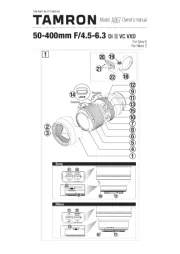
1 September 2025
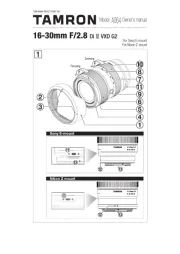
1 September 2025
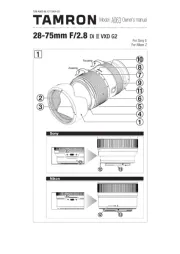
5 Augustus 2025
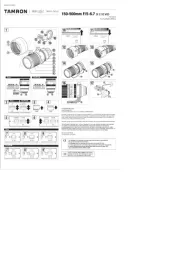
10 Juni 2025

2 April 2025

25 November 2024

16 November 2024

16 November 2024

16 November 2024

16 November 2024
Handleiding Lens
- Bresser
- Thypoch
- Metabones
- ECS
- Yongnuo
- Optoma
- Lensbaby
- Laowa
- Fujifilm
- Carl Zeiss
- Flir
- Kodak
- Voigtlander
- Leica
- MOFAGE
Nieuwste handleidingen voor Lens
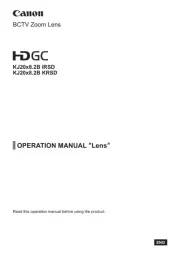
1 September 2025
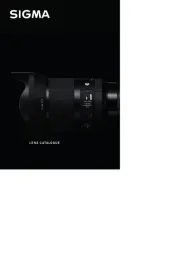
31 Augustus 2025
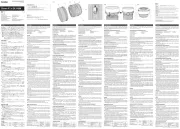
31 Augustus 2025
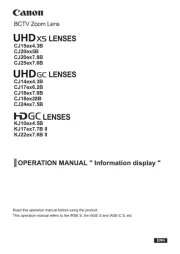
27 Augustus 2025
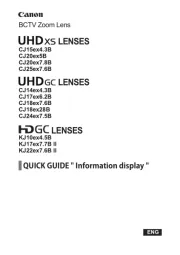
26 Augustus 2025
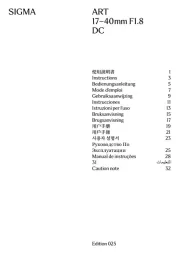
25 Augustus 2025

18 Augustus 2025
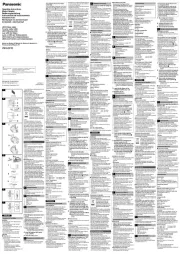
18 Augustus 2025
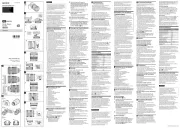
6 Augustus 2025
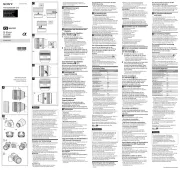
6 Augustus 2025